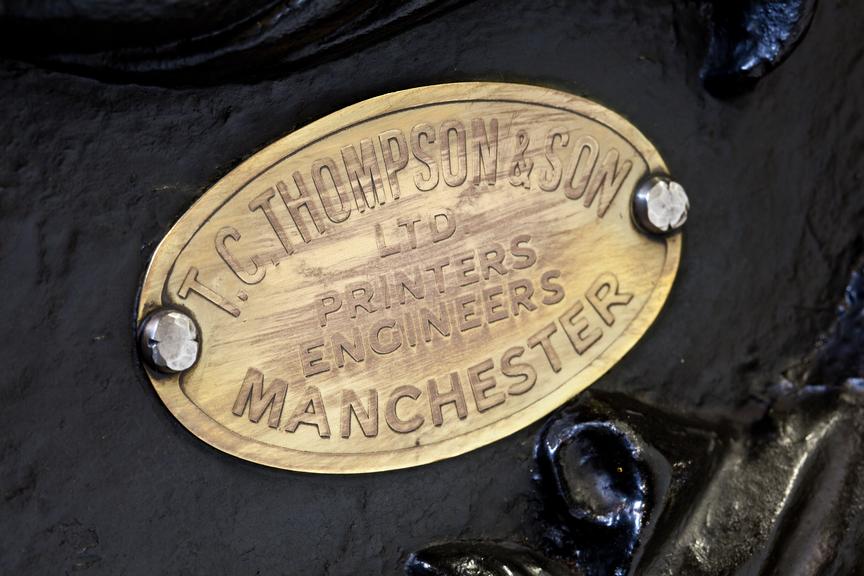

Cast iron Columbian printing press
- Made:
- circa 1850 in Greater London






Columbian hand printing press made around 1850. Cast iron with eagles and serpents moulded into casting. Lever operated, and painted black. There are two plates on the object 'Columbian press, invented by the late George Clymer. Manufactory. 120 Aldersgate St London' and 'T C Thompson & Son Ltd. Printers Engineers. Manchester'.
The Columbian was the first printing press to be manufactured on a large scale. Originally designed in Philadelphia, USA by George Clymer (1754?–1834) the Columbian was much more ornate than previous presses. Advances in the cast iron industry allowed for more elaborate decoration and the Columbian used this to great effect. It was produced in Britain from 1812 onwards.
Like the Stanhope, the Columbian was an early all-iron printing press which was able to print whole sheets of paper at a single pull and could apply great pressure to the printed surface through a series of levers.
The Columbian was invented and patented by George Clymer of Philadelphia in 1813, and was the first press to be made in great numbers by many different firms and for over a hundred years. It was more popular in Europe and particularly in Britain than it was in the United States, and Clymer took out a British patent in 1817, setting up a factory here the following year. Whereas the American newspaper proprietors claimed that the press was not efficient enough for adoption, Clymer quickly won approval in Britain for the press's ease of operation. Clymer formed a partnership with Samuel Dixon in 1830 to continue to make the presses, and Dixon continued production after Clymer's death four years later.
The Columbian, like the Stanhope, could print at faster speeds, allowing a greater variety of material to be printed, from stationery to hand bills, posters to sales notices, as well as books and newspapers. The counterbalance applied more pressure to the printed surface when linked to a series of levers, producing a cleaner print at a single, light pull of the lever. It was noted for its distinct and ornate appearance: the American eagle acting as a counterbalance weight, together with the wand, serpent, dolphins, olive branch and cornucopia, all having symbolic meanings. An experienced pressman and his assistant could produce up to 250 printed sheets per hour.
Details
- Category:
- Printing & Writing
- Object Number:
- Y1973.39
- Materials:
- metal (unknown) and wood (unidentified)
- Measurements:
-
overall: 2100 mm x 1800 mm x 1500 mm, 900 kg
- type:
- hand printing press
- credit:
- Gift of Mr E. Bell




